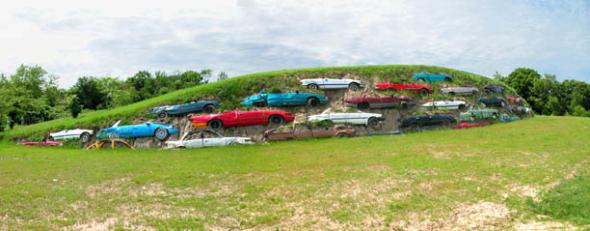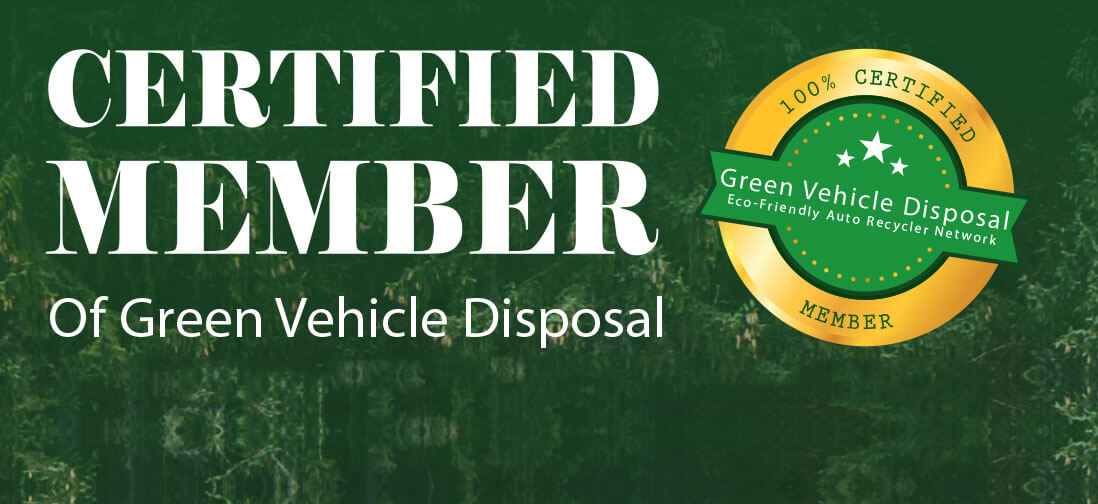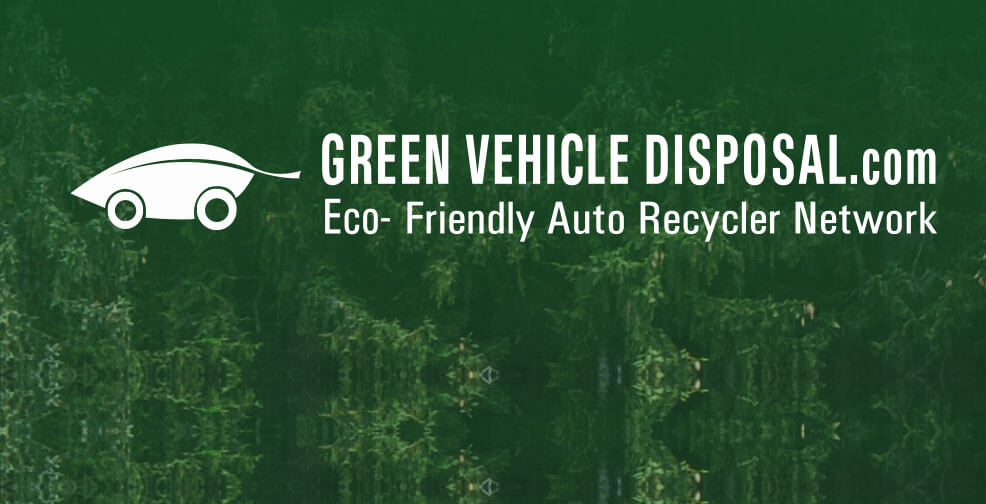
SERPENTINE MOUNDS portrayed the continuing battle between our natural world and our love affair with the automobile — our modern beast of burden — and the promises offered by “ever-improving” technological inventions. SERPENTINE MOUNDS was not only a visual art installation with fundamental visual concepts that will trigger interest and questions, it became a means to express ideas of environmental conservation and sustainability. SERPENTINE MOUNDS was built with the help of Toronto Solid Waste Management, Terrafix Geo and Standard Auto Wreckers whose interests in the concept uniquely ties in with their environmental mandates. – Artist Ian Lazarus 2004
The Big Picture
Producers of vehicles, at a global level, are facing demands from their respective governments to improve on fuel efficiency and emission standards. This has lead to an increased cost associated with the disposal of vehicle waste products such as fluids, tires and hazardous materials. This also leads to decreased revenues generated from scrap metal. ASR, as mentioned, creates huge problems due to its composition for the environment, and presents associated disposal costs for the shredding operation handling the material. Due to the overall lack of legislation governing the practices of those involved in the processing of ‘end of life vehicles’, an un-level playing field ensues in that those parties concerned with the environmental sustainability and conduct their businesses accordingly, are at a disadvantage compared to those that do not.
In order to ensure the environmental harmonization of all sectors involved in the processing of end of life vehicles, communication is of utmost importance. By involving all sectors such as the manufacturing, dismantling and shredding industries, issues such as product design and the materials used in the production of these vehicles, will ultimately translate into gains for all parties involved. If the manufacturer were to use a material that was easily stripped and recycled, the dismantling and shredding industries would be better equipped in handling the product produced. In order to successfully address the problem of End Of Life Vehicles, it is of necessity that all stakeholders within the industry work together as a combined effort. Before GreenVehicleDisposal.com, End Of Life Vehicles were seen as a problem, we are the solution to that problem in North America.
Statistics
It is estimated that over 2 million tons of material exists that is to be recovered and disposed of by vehicles that were not resold. For example, 1.85 million vehicles a year reach the end of their lives in the United Kingdom. About 80% of this amount is recycled and is composed mainly of metal. The remaining 20% or so is sent to land fill sites in the form of ASR. It is vital given the increasing rates of car ownership, at a global level, that there is also a subsequent increase in the rate of End Of Life Vehicles treated and processed.
FACT
Half of the 20,000 tons of engine oil removed is removed improperly. Having said this, if one liter of engine oil found its way into a water source, one million liters of water will, in effect, be contaminated. Likewise, engine oil poured directly onto the ground can and will affect soil fertility.
Large volumes of tires, when disposed of in land fill sites may cause instability due to the fact that tires often rise to the surface. This will cause instability therefore affecting long term settlement of the site, the future use and possibility of reclamation. Moreover, because tires are made up of organic materials, of which long term effects are relatively unknown, the seeping of such chemicals into the soil and atmosphere present potential health risks to both human and wild life.
These risks have been analyzed in recent years because due to the increased number of vehicles being disposed of in an environmentally unfriendly manner, this also leads to a subsequent increase in the number of tires disposed. Concern has been raised also, due to the increased instances whereby tires are removed for the supposed recycling of them, but are simply dumped with no intention of recycling them. This has lead to the development of legislation in these areas and severely punishes those, with fines or even jail time, for the illegal disposal of tires.
The GreenVehicleDisposal.com mandate is to significantly reduce the mismanagement of End Of Life Vehicles by simplifying the pick up and disposal process for our customers and Affiliates.
This is based on three objectives:
- Waste prevention or reduction: if the amount of waste is reduced, the degree of hazardous material resulting will have been reduced also. This step immediately involves the automobile manufacturing sector as product design and material choice is ultimately the preference of the producer.
- Recycling and Reuse: In the many instances where waste cannot be prevented, an alternative to contributing to the problems created by End Of Life Vehicles is to recycle whenever possible. As individuals may not be able to dispose of their own vehicles,
GreenVehicleDisposal.com takes care of this for you. Rest assured that your vehicle would be disposed of in an environmentally sound way! - Alternative methods of final disposal: Automotive Shredder Residue (ASR) presents a major problem as far as the well being of the environment is concerned. Landfill sites should only be used as a measure of last resort. This may be achieved by adhering to the preceding objectives.
Future Obstacles
The present rate of ASR being disposed of at landfill sites is unacceptable. All industry stakeholders must harmonize their views and recognize that the current rate of ASR does not present a long-term solution. Rather, it exacerbates the present rate of environmental disintegration. As mentioned, one manner of achieving the goal of a decreased rate of ASR would be all sectors and industry stakeholders creating avenues of heightened communication, whereby changes in production techniques and materials and the implementation of new production, dismantling, shredding and recycling technologies would be made readily available to the necessary parties.
Aside from the ASR issue, another future obstacle stems from the fact that there are currently no markets available for all recyclable materials recovered from vehicles. If markets were created that dealt specifically with the recycled materials produced from vehicles there would definitely be a lot more incentive to recycle.
Overall, a greater emphasis is needed on the communication between stakeholders of the automotive industry. Research and development based on the promotion of a higher recyclability rate of End Of Life Vehicles during the design phase could go a long way in extending the recovery and recycling rate of End Of Life Vehicles across North America.



